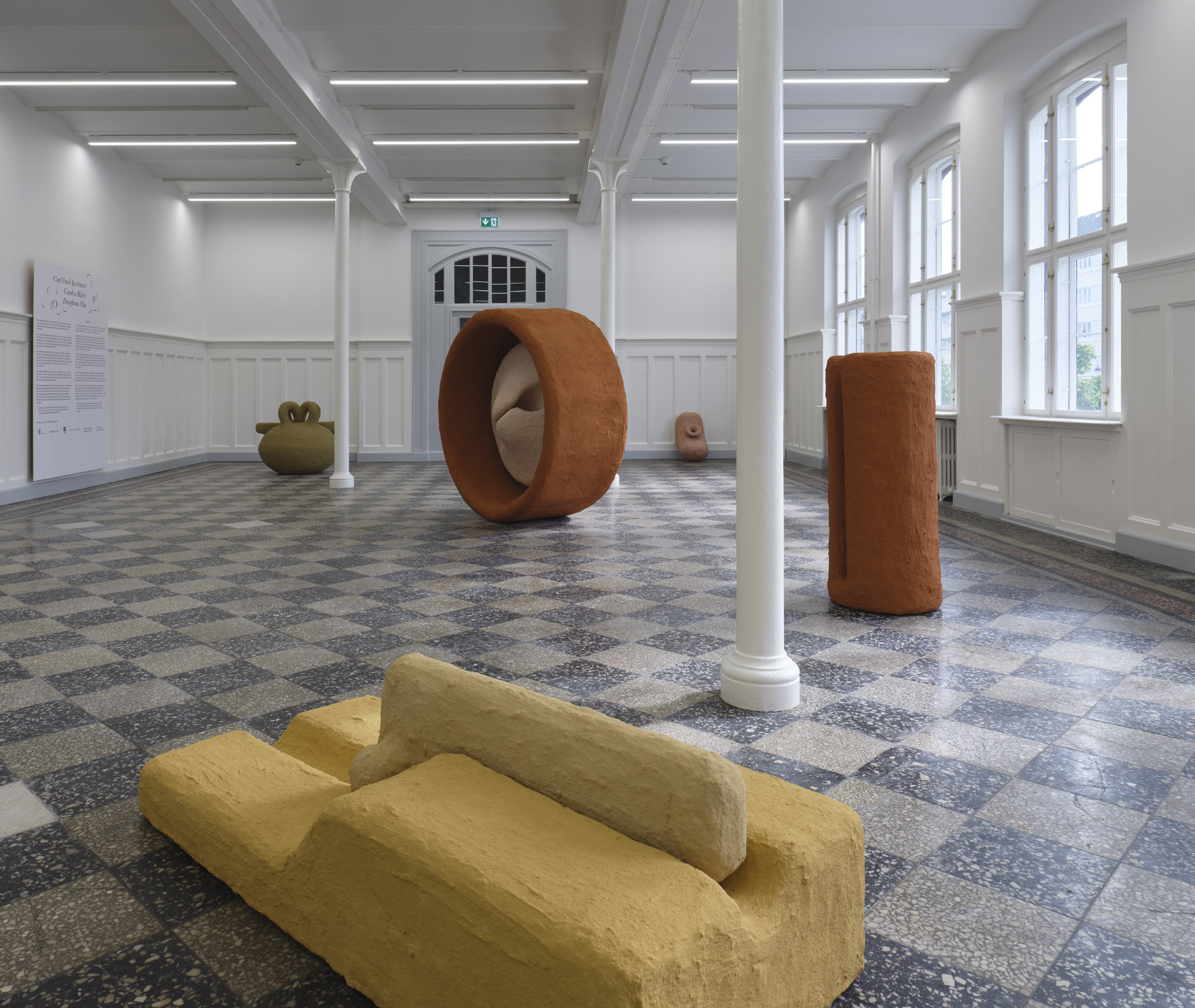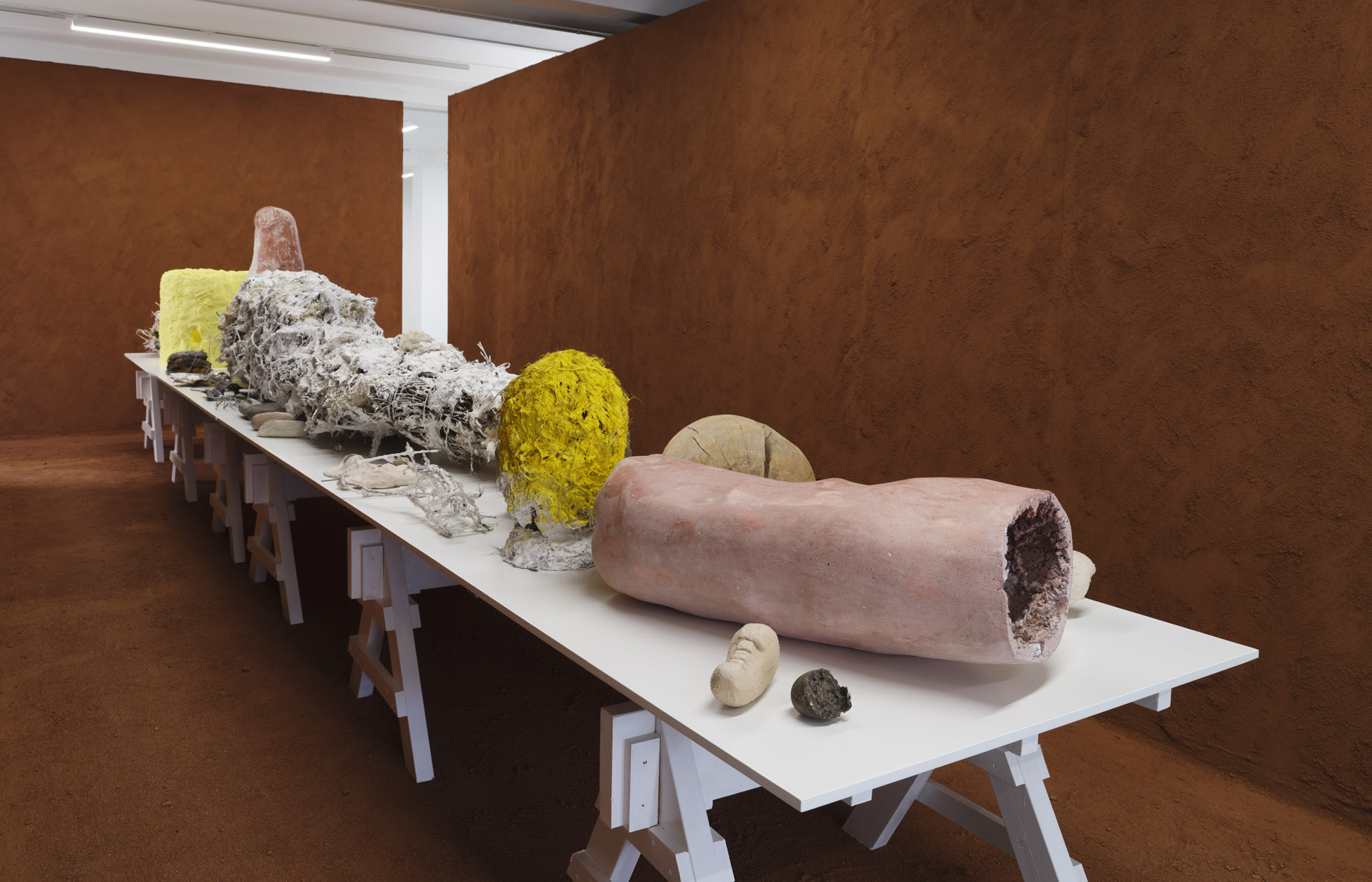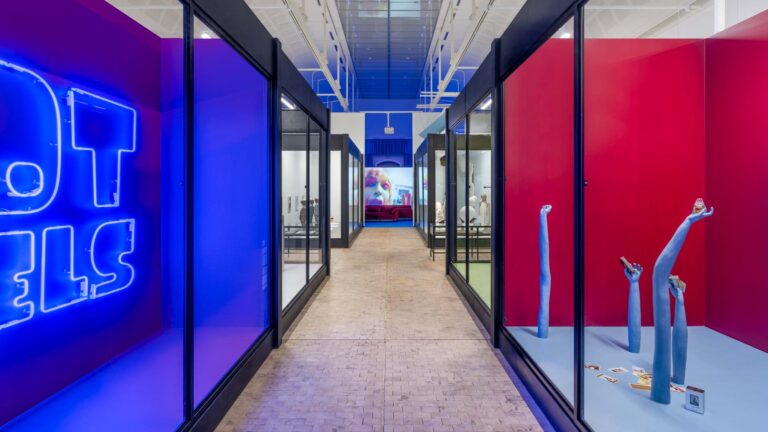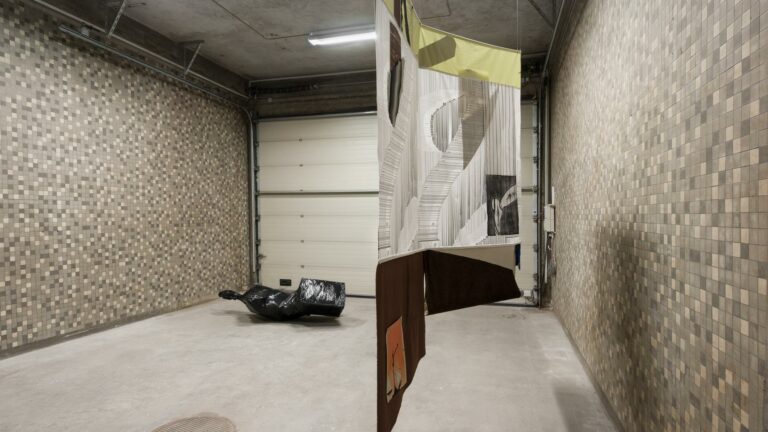Artist: Carl Emil Jacobsen
Exhibition title: Comb a Hairy Doughnut Flat
Venue: Overgaden, Copenhagen, Denmark
Date: August 13 – October 10, 2021
Photography: Anders Sune Berg / all images copyright and courtesy of the artist and Overgaden, Copenhagen
Several voluminous, organic figures occupy the first floor of Overgaden. With their rounded shapes in burned pastel colors, their crude surfaces, and seemingly massive weight they could resemble amputated body parts, oversized tools, or erotic fetish objects.
This ambiguous mode of expression constitutes a balancing nerve in Danish artist Carl Emil Jacobsen’s work, and with Comb a Hairy Doughnut Flat – the artist’s first institutional solo exhibition – the exhibition space is turned into a workshop and a piece of nature. With the process as its own goal and an almost ritualistic attention on the breakdown of materials and the physical shaping, Carl Emil Jacobsen’s abstract sculptures are oozing an insisting, sensuous appeal.
Comb a Hairy Doughnut Flat – that borrows its title from a mathematical theory about the geometry and spatial dynamics of curved surfaces – present a new series of pigment-painted sculptures made in fiber concrete and acrylic as well as a distinctive space displaying sketches and models. The exhibition is built up as a transitory scenography which unfolds in three different phases during the exhibition period. Based on the working titles First Impression, Odd Couple and On the Other Side Jacobsen rearranges the works in order to examine the process as a material and the relational changeability of the works.
Artworks are usually completed when they’re presented in an exhibition – ready for eyes meeting them as final statements. Jacobsen’s works are completed too, but rather than letting the sensory perception end with the finished forms, the ambition is to lead the viewer in the direction of the actual shaping methods. How can the artist’s processing of concrete, rock, and pigments define an object’s being? Can a gaze at an artwork be a gaze upon its creation? As such, the exhibition is an experiment: is it possible to see anything else than the works themselves in a space – the exhibition space – the designated function of which is to enable objects to be looked at? How do we sense the underlying work, earth and pigments as their own outlined materials, detached from the shapes and colors to which sculptures attach them?
With his unique production of pigments, utilizing local stone and mineral materials, Jacobsen’s practice is literally connected to the landscapes surrounding him. Nature’s regeneration processes and a cyclic feeling of organic transformations is constantly present in the sculptural expression. Traces of modernist abstraction are drawn through his sculptural language, but aside from this language, another voice intrudes. You could call it a “nature language” or a “body language”; a timeless underlining of how the artificial and the natural are not opposites. The body and the eyes are mutually dependent in their encounters with art as well as nature.
Carl Emil Jacobsen (b. 1987, DK) holds a MA in Industrial Design from Design School Kolding (2012) and works in the intersection between art and design. His works have been exhibited at The Curio, Chart Art Fair, the Spring Exhibition at Kunsthal Charlottenborg, Patrick Parrish Gallery, New York, Galerie Maria Wettergren, Paris, Piscine, Arhus and The Round Tower, Copenhagen, among other places. In 2018 he participated in the prestigious design exhibition MINDCRAFT 18 in Milan and in 2020 he was selected for the Danish Arts Foundations two-year career development program ‘The Young Artistic Elite’.
The exhibition is supported by the Danish Arts Foundation, Beckett-Fonden, Merchant LF Foght’s Foundation, Danmarks Nationalbank’s Anniversary Foundation of 1968, the Hielmstierne-Rosencroneske Foundation, and the Bodil Pedersen Foundation.












































